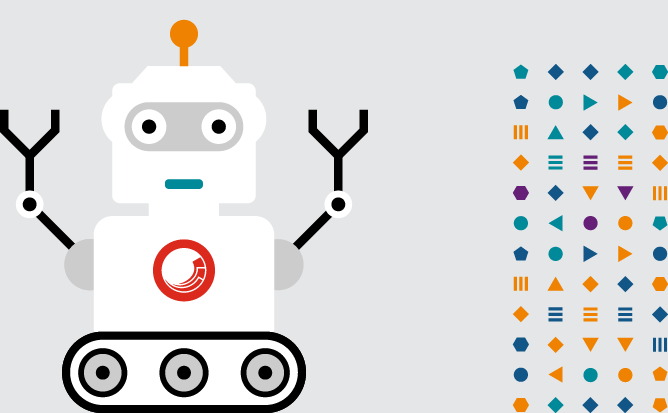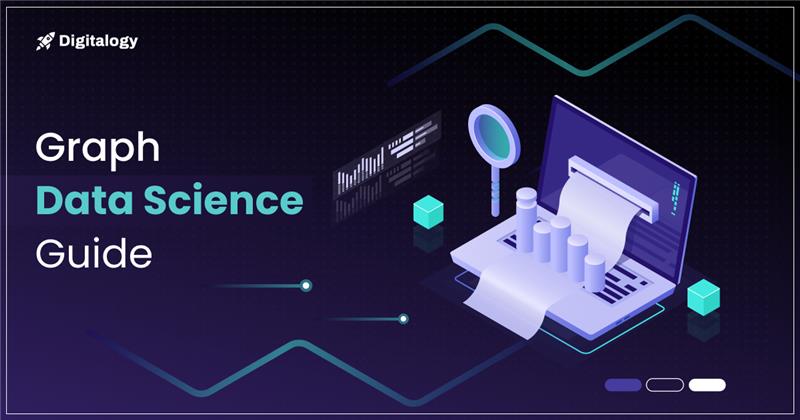One of the applications of Artificial Intelligence (AI) is Machine learning which provides systems the ability to automatically learn and develop from experience without being unambiguously programmed. The developments of computer programs that can access data and use it to learn for themselves are the main features of Machine learning.
The procedure of learning begins with observations or statistics, such as examples, instruction, or direct experience, to look for patterns in data and make enhanced decisions on the examples that we provide for future-based enhancement. The most important aim is to allow computers to learn robotically without human assistance or intervention and adjust actions accordingly.
Machine learning-based algorithms are often categorized as supervised or unsupervised.
Supervised machine learning algorithms are applied to predict future events based on what has been learned in the past to new data using labeled examples. Starting from the study of a known training dataset, an inferred function to make predictions about the output values id developed with the learning algorithm. The scheme can offer targets after sufficient training for any new input.
The Machine learning algorithm can also assess its output with the intended, correct output to adjust the model accordingly and further help in finding errors.
In comparison, unsupervised machine learning algorithms are exercised when the information used to instruct is neither labeled nor classified. Machine learning which is unsupervised studies how systems can deduce a function to describe a concealed arrangement from unlabeled data.
The system explores the data and can draw inferences from datasets to describe hidden structures from unlabeled data but does not always figure out the right output. Amazon, Google, Salesforce, Netflix, and IBM are some of the well-known names who are nailing the Machine Learning thing.
Deep Learning
Another major subfield of machine learning is Deep Learning which is concerned with the function and structure of the brain called artificial neural networks with the help of algorithms. Chief Scientist at Baidu Research Andrew Ng from Coursera formally founded Google Brain which eventually resulted in the production of deep learning technologies across a huge number of Google services. Using brain simulations, it hopes to:
- Make revolutionary advances in machine learning and AI
- Make learning algorithms much better and easier to use
- I believe this is our best shot at progress toward real AI
Deep Learning is described where pre-trained models are utilized as natural language processing tasks given the vast computing and time resources required to develop neural network models on these problems and from the enormous jumps in ability that they provide on related problems and as the starting point on computer vision. Deep Learning’s major important point is about scale.
Their performance continues to increase as we construct larger neural networks and train these with more and more data. This generally varies from one to another machine learning techniques that attain a ground in performance.
As one of the famous researchers said, for the most essence of the older generations of learning algorithms, performance is the main ground and deep learning provides the first class of algorithms that are scalable. And as we discussed performance just keeps getting superior as you feed them additional data.
As we hear the term deep learning, we just think of a large deep neural net. In deep learning “Deep” refers to the number of layers typically and so this kind of the popular term that’s been adopted in the press. Everybody thinks of it as deep artificial neural networks.
The significant property of neural networks is that their results get better with more data, more computation, and bigger models (better algorithms, new insights, and improved techniques). In addition to scalability, another often quoted benefit of deep learning models is their capability to execute automatic feature extraction from raw data, also called feature learning.
Deep learning algorithms seek to exploit the unknown structure in the input allocation to determine good representations, often at higher levels, with multiple-level learned attributes defined in terms of lower-level features.
Deep learning methods aspire at learning feature hierarchies with characteristics from superior levels of the hierarchy formed by the composition of lower-level hierarchy features. Automatically learning traits at different levels of notion allows a system to learn compound functions without depending completely on human-crafted features with the help of mapping the input to the output directly from data.
The chain of command of concepts allows the computer to discover complicated concepts by building them out of simpler ones. If we try to draw a graph showing how these concepts are constructed on top of each other, the graph becomes deep consisting of many layers. This is the reason this approach is called deep learning AI.
Why call it “Deep Learning”? Why Not Just “Artificial Neural Networks”?
Using corresponding priors, we derive a greedy and fast algorithm that can discover deeply, directed principle networks one layer at a time, provided an undirected associative memory which is derived majorly from the top two layers.
We portray an effective way of initializing the weights to learn low-dimensional codes that allow deep autoencoder networks which work much improved than principal components analysis as a tool to lessen the dimensionality of data.
Royal Society talk descriptions of deep learning are very backpropagation-centered as anyone would anticipate. The interesting thing is that they gave reasons why backpropagation did not take off the preceding time around in the 1990s. And the thing is, the first two points match comments by Andrew Ng about computers being too deliberate and datasets being too small.
Deep Learning as Scalable Learning Across Domains
Deep learning stands out in problem domains where the outputs as well as inputs, are analog. It means that they are not a few measures in a tabular format but instead are documents of text data, images of pixel data, or files of audio data.
The director of Facebook Research is the father of the network architecture, Yann LeCun which surpasses object recognition as a Convolutional Neural Network (CNN) in image data. This technique is seeing great success because unlike feedforward neural networks these are multilayer perception, the practice scales with model size and data and can be trained with backpropagation.
Deep learning [is] a pipeline of modules all of which are trainable and is called deep (as we discussed above) because it has multiple stages in the process of recognizing an object and all of those stages are part of the training.
In this post, we have discussed that deep learning requires a lot more data forming very big neural networks, requiring bigger computers. Although early approaches focus on greedy layerwise training and unsupervised methods like autoencoders published by Hinton and collaborators.
Modern state-of-the-art deep learning is focused on training layered learning neural network models using the backpropagation algorithm. As per the trending technologies around the world, Deep Learning will help many of the algorithms and learning techniques easier for us to understand.







